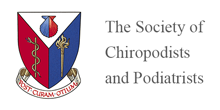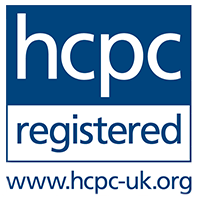Nail Surgery
Nail surgery is a low risk surgical procedure where part, or all, of a toenail is removed under local anaesthetic. It is performed for people with painful nail conditions, or sometimes for people wo have nails with an unpleasant appearance such as thickening. Although a 100% guarantee cannot be given, in the vast majority of cases nail surgery provides a permanent solution for the problem.
Sometimes a medical conditions or medications can affect the action of local anaesthetic, or your ability to heal. So, please inform your Podiatrist if you are taking any medications, if you are pregnant, or if you have had any allergic reactions in the past. If there is a possibility that you could be pregnant nail surgery should be deferred until after the first twelve weeks.
Before Your Operation. Your first appointment with the podiatrist will be for an assessment, to determine whether you are suitable for nail surgery. This may be done on the day of surgery if you need your procedure quickly, or during your routine visit if you are an existing patient.
At the assessment, you will be asked about your medical history and any medication you are taking. Please ensure that you tell the podiatrist about any medication prescribed by the doctor, bought over the pharmacy counter or herbal or recreational drugs. It may be helpful to bring the packaging for your tablets or a prescription with the names of your medication. It is especially important to let the podiatrist know if you are, or may be pregnant, and if you have had any adverse reactions to local anaesthetic before.
What does it involve? Two injections, one each side of the toe, are used to make the toe feel numb. This may be uncomfortable but once the anaesthetic is working, you will not feel pain, although you may feel a slight sense of pressure. Following the surgery there may be mild swelling or bruising of the injected area. This will soon disappear.
Part, or all, of the toenail is carefully lifted from the nail bed, requiring no cutting of the skin and no stitches.
A chemical called Phenol is used to destroy the cells in the nail matrix to prevent re-growth of the portion of the nail that has been removed. This can, in rare cases, cause slight burning or blistering which will be limited to this area.
Finally a sterile dressing is applied to the operation site in order to prevent dirt entering the wound. Your first dressing is quite large, so bring loose fitting shoes or slippers to wear while travelling home. The whole procedure takes approximately 45 minutes.
The local anaesthetic takes two to three hours to wear off and you are, therefore, advised not to drive yourself home but to make alternative arrangements. Your car insurance may be affected if you drive while your toe is numb. Any discomfort or pain can be relieved with simple pain killers such as paracetamol. Aspirin is not advised as it encourages bleeding.
After surgery you will be given a date, within three days of the surgery, for your first redressing appointment. This appointment is very important and must be kept so that the healing process can be checked, and a smaller dressing put on your toe.
At the first dressing appointment you will be given an information sheet on post-operative care, including advice on how to bathe and redress the toe(s) yourself. You will be given a pack of dressings to start your dressing regime.
Note. If you are unable to do your own re-dressings and have no one to help you, you will need to make arrangements with your Practice Nurse before you have surgery. The toe(s) will need to be re-dressed every two or three days until healing is satisfactory.
Frequently Asked Questions
What is Nail Surgery? Nail Surgery is a simple procedure, involving local anaesthetic, ie while you are awake. Part or all of the nail is removed and a strong chemical will be used to prevent regrowth of the nail. Your appointment will usually last approximatey 45 minutes – 1 hour.
Do I have to have Nail Surgery for my Ingrown Toenail? You may not need an operation. The podiatrist will assess whether your problem can be solved in any other way and will advise you of all options.
Will the operation hurt? No, it is carried out under local anaesthesia, although you will have some pain with the injection of anaesthetic. The toe should be numb for a couple of hours after your operation depending on your metabolism. If the toe is painful after the anaesthetic wears off, it is recommended you take paracetamol. Avoid aspirin for 48 hours after the procedure and alcohol for 24 hours, as these can increase bleeding. Be sure to rest, preferably keeping the leg elevated as much as possible for the rest of the day after your surgery.
When can I go back to work / school ? It is not advisable to go to work or school the same day as your operation, but for most people it is fine to go back the next day. If you work on your feet a lot, have a risk of dropping things on your feet or your feet getting wet, or if the area is particularly painful, you may decide to stay off for longer.
What are the risks? Risks include infection or dressing allergy, temporary chemical burns to the surrounding skin, slow healing, In rare cases, patients may experience numbness, pins and needles or stiffness of the toe joint for several weeks after surgery. Undesired regrowth of the nail occurs in approximately 5 – 8% of patients. Allergy to local anaesthetic is extremely rare but serious; your podiatrists is trained to deal with this if it should occur.
Anything I need to do on the day of operation ? It is advisable to eat a light meal before the procedure. You will need a lift home or minicab because your insurance is affected while your toe is numb.
Do I need to bring anything with me? Please remember to bring a pair of sandals or large fitting shoes that will accommodate a large bandage.
1
How long will it take to heal? Average healing time is 6 -8 weeks. It is slow to heal because of the chemical used to kill your nail bed. Please do not decide to leave the wound open to the air or use alternative dressings / soaks to help it to heal faster. It will not work and may become infected. The wound will look infected as it is healing – this is normal and is caused by the chemical used to kill the nail bed. If you get an increase in pain, odour or swelling / redness please contact your podiatrists for advice.
Will the nail grow back? The aim of the surgery is to prevent the nail from growing back, but no procedure has a 100 percent success rate. Audit suggests a success rate of about 90-95% percent with this particular form of treatment.
What about going back to work / school / sport ? You can usually return to work, or school, the day after the procedure. However this is dependent on your occupation and whether you will be able to wear footwear which will accommodate the bulky dressing and which does not squeeze the toe(s). Your Podiatrist will discuss this with you. Swimming and most sport cannot be resumed until your wound has healed.
How do I care for my toe after the operation? After the operation, you will have a large thick bandage for the first day, and you will be given a dressing pack in case the toe bleeds through the bandage. DO NOT REMOVE the original dressing if there is bleeding, just add a new dressing over the top. Within a few days, you will return to the clinic for your first redressing appointment, and the large bandage will be replaced by a small dressing. You will need to keep the wound out of bath water (shower water is ok) while it is healing, and you must avoid swimming and most sport until the wound has healed.
It is important to follow the advice in the redressing leaflet you will be given at your redressing appointment. You will be dressing the area every few days and carrying out salt water soaks 2-3 times per week. The podiatrist will see you once more before you are discharged.




